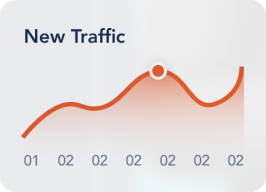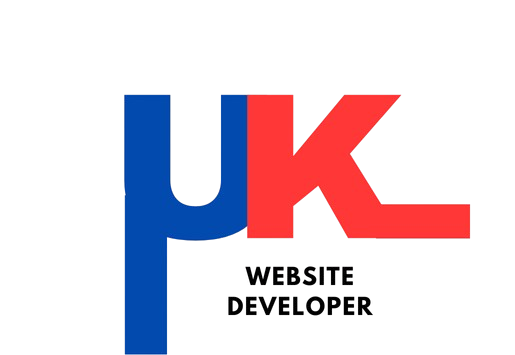Why Store Design Matters in E-Commerce
Shopify is In today’s competitive digital marketplace, your Shopify store’s design isn’t just about aesthetics—it’s a critical business tool that directly impacts:
- First impressions (formed in just 50 milliseconds, according to Google research)
- Customer trust (94% of consumers cite web design as reason for distrust)
- Conversion rates (well-designed stores convert 200-400% better)
- Brand perception (consistent design increases revenue by 33%)
This comprehensive 2,000+ word guide will walk you through 10 proven strategies to create a Shopify store that not only looks professional but drives real sales results. We’ll cover everything from theme selection to checkout optimization, complete with:

✅ Actionable tips you can implement today
✅ Real-world examples from successful stores
✅ Essential tools to streamline the process
✅ Latest data on what actually converts
1. Choosing the Perfect Shopify Theme (Your Foundation)
Why Your Theme Choice Matters More Than You Think
Your theme determines:
- Loading speed (1-second delay = 7% loss in conversions)
- Mobile responsiveness (54% of eCommerce traffic is mobile)
- Conversion pathways (how customers move toward purchase)
Key Selection Criteria
| Factor | Why It Matters | Ideal Solution |
|---|---|---|
| Mobile Optimization | Google’s mobile-first indexing | Look for “responsive” in theme specs |
| Loading Speed | 53% abandon sites taking >3s to load | Test demo with Google PageSpeed Insights |
| Customization | Brand consistency across pages | Check theme editor flexibility |
Pro Tip: Always test the demo version before purchasing. Look for:
- Product page layouts
- Collection page options
- Header/footer customization
Recommended Themes:
- Free: Dawn (Shopify’s fastest free theme)
- Premium: Impulse (300)orTurbo(300)orTurbo(350) for advanced features
Navigation: The Unseen Sales Funnel
The Psychology Of Navigation That Works
Buyers should:
Locate what they need within three clicks
Not questioning what to do next
Find related items subsconsciously
Before and After Sample:
Weak Navigation:
Menu: “Products, About, Contact”
Doesn’t offer search option
Nested categories require drilling down
Strong Navigation:
Mega menu with visual categories
Predictive search with product images
“Shop by” filters (size, color, price, etc)
Best Tools For Navigation:
Search: Searchanise (predictive search)
Filters: Product Filter & Search app
Menu: Mega Menu by Station
Visual Storytelling That Sells
The Image Hierarchy Every Store Needs
Hero Image: Lifestyle shot portraying the brand
Product Shots: White background + 3+ angles
Detail Shots: Close-ups of textures/features
Comparison: Visual checklist, charts
Social Proof: Customers’ shout-outs
Case Study: Gymshark Product Page Evolution
2015: Oneproduct image, loads of text
2023: 360° spins, video demos, UGC gallery
Essential Visual Tools:
Photo Editor: users edits on photo to remove background.
Video: Stop Motion Studio (product demos)
Galleries: Infinite Product Options custom views
Mobile Optimization – The Deal Maker Or Breaker
Mobile Commerce Stats You Can’t Ignore
73% of shoppers use multiple devices
Mobile conversion rates increased 30% since 2020
70% will abandon slow-loading mobile phones
Mobile UX Checklist:
☑️ CTAs that are easy to press with thumbs (at least 48x48px)
☑️ Implementation of Accelerated Mobile Pages (AMP)
☑️ Apple Pay/Google Pay simplified checkouts
Case in Point:
Allbirds streamlined mobile checkout processes from five to two steps, boosting conversion rates by 11.3%.
SEO Your Unseen Traffic Generator
Shopify SEO Hierarchy of Needs
Technical: The site’s speed and mobile-friendliness.
On-Page: Keywords, meta tags, alt texts.
Content: Blogs, buying guides, and FAQs.
Off-Page: Backlinks and social signals.
Actionable SEO Tasks:
Fix duplicate content using canonical tags.
Optimize collection URLs. For example, /collections/mens-t-shirts vs /collections/123.
Add schema markup for products.
Recommended Apps:
SEO Manager app automates optimizations.
Smart SEO manages redirects up-to-par.
Bloggle is good for content marketing.
- Talking Product Pages That Sell
High-Converting Product Page:
The Title: Has to have the price along with a strong benefit. Example: “Crew Neck Tee – $29 – Organic Cotton.”
Media: Fine images, videos, and three hundred sixty degrees overviews (5+).
Descriptions: Engaging stories alongside compelling reason bullets.
Social Proof: Customers’ recent reviews with images.
Urgency: Shows Counter “Only 3 left in stock.”
Adding Psychological Triggers:
Badges for Scarcity.
Bundles for “Purchased Together.”
Live counters for Visitors.
Optimizing Checkout: The Last Challenge
Shopify Best Practices For Checkout:
One page
aims to reduce form fields by thirty percent.
Standing Indicators: “Step 1 Of 2” anxiety.
Trust Badges: Norton Secured and Money back guarantees.
Flexibility Of Payment: shop pay deals with 50% increase to checkout speed.
Example Before & After:
Fictional Case:
Before Optimization
4-Page Checkout.
Required Account Creation.
Available Payment Methods: Only Credit Cards.
After Optimization:
1 page checkout
Allows for Guest Checkout.
Payment Options: Shop Pay and PayPal.
- The Branding Checklist Helps Develop Recognition.
Logo: SVG Files Ensures Total Image Quality
Colors: Hexadecimal representation of each team’s name has been saved
Typography: Two font families as a maximum
Voice: Guidance on how to write promotional texts for the products
Toolkit:
Canva (use of brand kit option)
Frontify (digital style guides)
Adobe Color (palette generator)
- Social Proof: Each Individual’s Promotion
Invalid Sources of Social Proof That Work
Reviews: Photo reviews bring 58% more clients
Testimonials: Best performing is video stories
User Generated Content: gallery exhibits from Instagram.
Trust Badges: Counters indicating “sold 10,000+”
Implementation Example:
Glossier’s product pages exhibit:
Group review ratings
“Top Review” badge
Instagram #glossierhaul gallery
Continuous Improvement: Strategies for Enhancing Business Growth
Ongoing Store Audit Checklist
Speed Test: WebPageTest.org
Broken Links: Screaming Frog SEO Spider
A/B Tests: Google Optimize
Analytics Review: Look through top exit pages.
Pro-Tip: Establish a calendar to perform “design refreshes” every quarter that includes:
Seasonal Homepage Banners.
Shifting trends in product advertising.
Holidays.
Conclusion: Formulate an Action Strategy
Actions Required for Day One:
Conduct mobile speed test
Add review application
Simplify navigational options
Week One Focus:
Redesign 3 key product pages
Set up email collection popup
Content calendar
Ongoing:
Monthly UX testing
Quarterly branding audits
Annual theme reassessment
